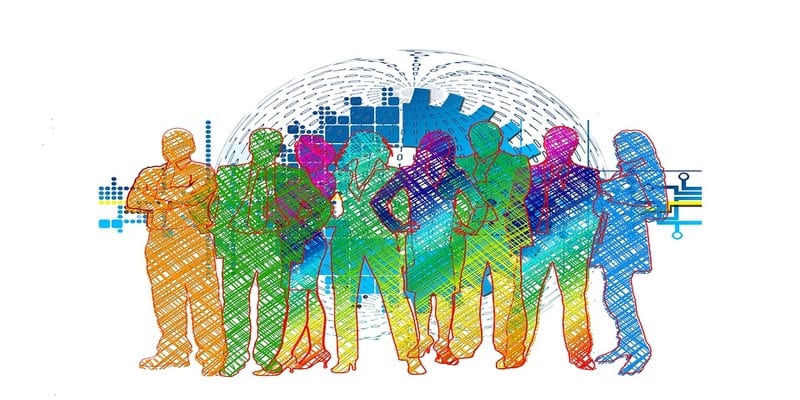
To remain competitive, companies need to embrace cultural change
Senior vice-president, Human Resources, RSA Canada. Over the past two decades, we’ve witnessed a radical cultural shift in workplaces across Canada. With a shrinking labour force and an increased desire for flexibility, many organizations are realizing they have to adapt and focus more on employees’ diverse needs in order to attract and retain the best talent. The very face of today’s work force is changing. There are more than 12 million millennials in Canada, and one of their primary motivations is flexibility – from where, when and how they work, to the digital and social tools they expect to utilize in the workplace. To remain competitive, companies have to commit to adjusting organizational cultures, processes and systems to accommodate the expectations of this dynamic cohort and other generations in the workplace.
Embrace change at any age
While some technology giants and the startup world are known for their flexible corporate culture and workplace perks, much of the corporate world has, perhaps unsurprisingly, lagged behind.
I work for one of the oldest insurers in Canada, a place you might expect to be “lagging behind” in terms of a forward-thinking workplace culture. I get the preconceived notions. Flexible, agile, digitally savvy – these aren’t words you would necessarily associate with a 300-year-old legacy insurance company.
But a couple of years ago, we recognized a need to change the way we operate and take a more pro-active approach to addressing factors affecting our business: from digital literacy to employee engagement. We also recognized that this evolution was not going to take the form of an overnight cultural makeover.
Embracing digital innovation was essential for us to stay ahead in a competitive landscape, as well as meet our employees’ and brokers’ expectations. And a cultural disruption – refocusing our workplace culture to address our changing and diverse employees’ priorities – was crucial for attracting and retaining the best talent in Canada.
So how did we do it?
Catering to the next generation of leadership
We began to implement this cultural shift by first identifying a number of priorities for RSA employees – specifically the increasing number of millennials within the company’s work force, and who we know will make up 75 per cent of Canada’s work force by 2024.
These priorities included a flexible work environment, an increased use of digital communications tools, and the need to work in a collaborative framework in order to build a fulfilling career. Knowing this, we started thinking of ways to implement changes that would directly address our employees’ feedback and meet the needs of our diverse work force.
One of the first things we realized was that only 65 per cent of the desk space at our downtown head office was being used at any given time.
This insight was key to kicking off what we call the “Better Ways of Working” or “BWOW’ campaign.
We consolidated our downtown head office to two floors from four, and invested the money saved into other areas of the business, including expanding our digital capabilities with significant investments in technology. We decided on an open-concept workspace, removing the barriers that separate typical corporate hierarchy – even for our C-Suite – to increase efficiency and collaboration, and introduced a variety of agile workstations so employees could choose the set-up that best suited the work they needed to do.
Perhaps most importantly, we encouraged our employees and our leaders to swap “office attendance” for new behaviours; including paying attention to e-mail and meeting etiquette, and communicating via digital platforms. Our goal was to empower our employees to determine how they could best complete their work, and also reinforce that their performance would be measured on the work they produced, not the number of hours they spent at their desk.
We also introduced a number of new digital communication platforms such as Skype, Yammer and WebEx, to make it easier for our employees to connect, collaborate and do business. This enabled us to keep pace with shifts and developments in technology, and also meet our employees’ and customers’ expectations for a digitally forward workplace.
Lead by example
Change is always scary – especially when it involves introducing new concepts and ideas to how we do business. We faced initial skepticism and push-back with some initiatives; now, almost a year into the program, we’re already seeing the signs of a high-performing talent base that’s more agile and receptive to change. Across the board, our employees have expressed that they’ve seen a significant improvement in the way they collaborate with colleagues.
Most importantly, we saw first-hand how cultural changes must begin at the top: for executives and senior leadership, role modelling the behaviour they want to see is crucial.
When our C-Suite and executives began to fully embrace the changes, they not only realized the benefits of the initiatives for their business outcomes – reducing meeting time and faster decision-making, to name a few – but their willingness to be innovative funnelled down to employees at every level.
No matter how many years of experience a company has under its belt, or how reluctant to change it might seem, it must always continue to learn and embrace what it means to be successful. For RSA Canada, this meant changing our culture into one that fosters collaboration, and altering our work environment into one that is agile – with the ultimate goal of making life better for our brokers and customers.
Executives, educators and human resources experts contribute to the ongoing Leadership Lab series.
WODIL 24
- June 28, 2019
